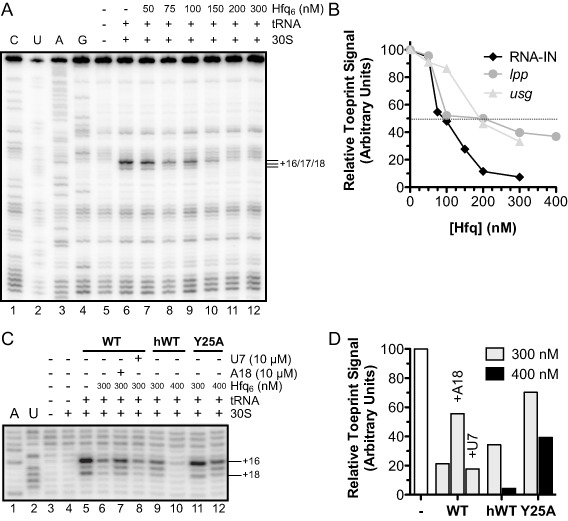Figure 6.

Impact of Hfq on initiation of RNA‐IN translation in vitro.
A. 30S ribosome binding to RNA‐IN +/− Hfq is shown in a ‘toeprint’ assay (for details, see Experimental procedures). Addition of 30S ribosomal subunits and initiator tRNA is indicated by + . The toeprint signal is indicated (+16/+17/+18) with numbering relative to the translational start codon. CUAG refers to sequencing reactions generated from the same RNA used for toeprinting.
B. Quantitation of RNA‐IN (A), lpp and usg (Supporting Information Fig. S3) toeprints. Toeprint signal was normalized to the combined band intensity (+16/+17/+18 for RNA‐IN; +15/+16 for lpp and usg) in the absence of Hfq, which was set at 100. The dashed line highlights 50% inhibition of the toeprint signal.
C. Toeprint analysis of RNA‐IN with distal (A18) and proximal (U7) site‐specific competitor RNAs. In addition, RNA‐IN toeprint signal was also analyzed for reactions containing Y25A versus WT Hfq. Note that for this latter comparison, Hfq contained a C terminal 6x‐His epitope tag. The competitor RNAs alone had no effect on ribosome binding (not shown).
D. Band intensities in C were quantified and normalized to the toeprint signal in lane 5 where no competitor or Hfq was added.
